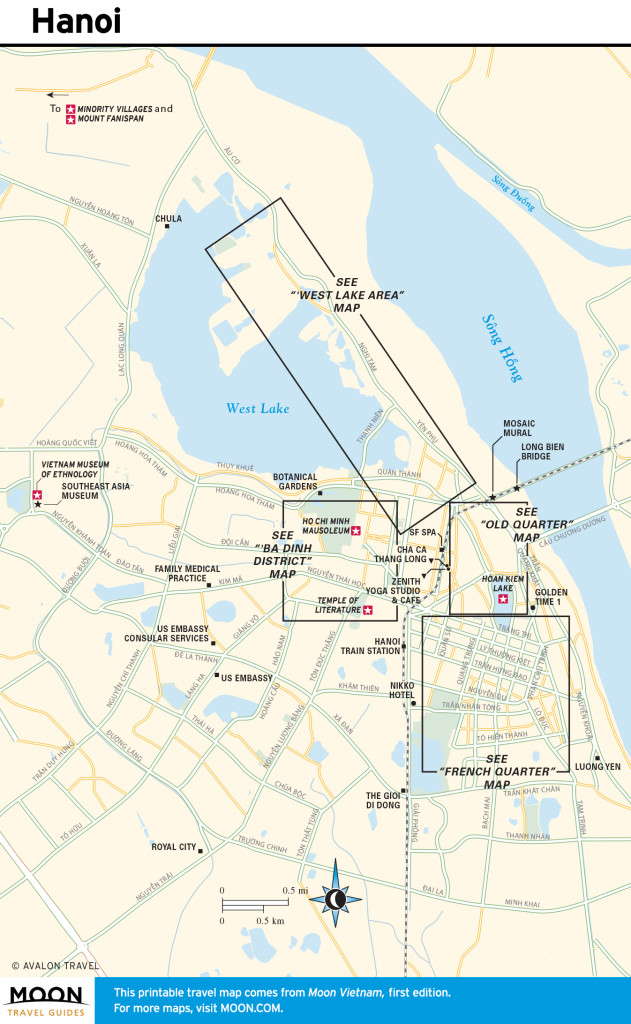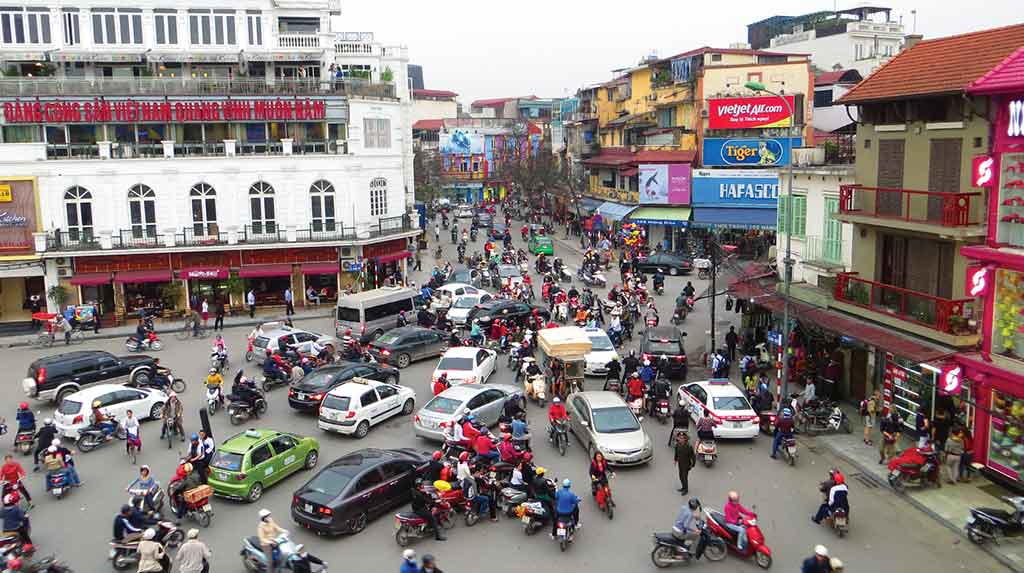In a thousand-year-old city, you would expect some things to get lost in the mix, obscured by cramped shops and narrow houses or buried under the incessant blare of traffic. But along the busy streets of Hanoi, every era of the city’s history shines, in its gracefully aging cathedral, sturdy Communist architecture, and the vibrant Old Quarter. Whether you’re wandering the bustling shopping streets of its older neighborhoods, diving into history at the Temple of Literature, or visiting the embalmed remains of Ho Chi Minh, Vietnam’s most respected national hero, there’s no denying that the soul of Vietnam lies in Hanoi.
Hanoi is a place to savor rather than sightsee. While its eclectic attractions make for a fascinating, patchwork history, the main draw of the capital is its infectious energy.The capital is sleek and sophisticated, playing the wise older sibling to Ho Chi Minh City’s freewheeling antics down south. A well-established art scene and strong café culture permeate most of the city, along with a self-assuredness that comes from having survived a millennium of ups and downs. Flashy boutiques and shopping malls are beginning to make an appearance around town, a stark contrast to the narrow, teetering tube houses of the city’s downtown districts.Most travelers to Vietnam pass through the capital, not only for its sights, sounds, and savory cuisine, but also for its status as a hub, connecting popular destinations like Sapa and Ha Long Bay with the rest of Vietnam.

Hanoi
Hanoi is a place to savor rather than sightsee. While its eclectic attractions make for a fascinating, patchwork history, the main draw of the capital is its infectious energy, which permeates every nook and cranny of Hanoi’s jam-packed neighborhoods.
Hanoi is no more than a three-day affair, thanks to its compact size, allowing visitors to cover plenty of ground in a short time. For additional adventures, such as Perfume Pagoda or Tam Coc, set aside an extra day. Trips to Sapa require as few as two days or as many as five, if you have time to spare.
Most museums are closed on Mondays, and many pagodas close for at least two hours for lunch. Sightsee in the mornings, when more of the city’s attractions are open.
Weather conditions in Hanoi are different from the tropical temperatures of the lower half of the country. Between November and February, Hanoi gets cold, with a steady mist and temperatures 50-60°F. Conditions become more pleasant around March and stay that way until the end of May, when temperatures start to rise. The heat reaches unbearable, sweltering temps in August, before another brief period of mild weather in September and October.
Hanoi is divvied up into 12 districts, 17 communes, and one hamlet, though most travelers stick to the downtown districts and the areas just beyond.

Downtown Hanoi at rush hour. Photo © Dana Filek-Gibson.
Hoan Kiem District is home to the eponymous Hoan Kien Lake, Hanoi’s most famous landmark and a useful point of reference when navigating the city. Hoan Kiem is comprised of the bustling Old Quarter, where much of the city’s commercial activity takes place, the posh French Quarter, and, along its western side, the Cathedral District. Along with picturesque St. Joseph’s Cathedral, the Cathedral District houses cheap backpacker accommodations and trendy boutiques.
Northwest of Hoan Kiem, Ba Dinh District is where many of the capital’s 20th-century historical sights are situated.
North of these downtown districts, Tay Ho (West Lake) is more upscale, with a residential feel and plenty of high-end shops and restaurants.
Hanoi’s streets are tricky to get the hang of, with windy and narrow streets, and street names that change several times over the course of a mile. There are plenty of English-speaking residents downtown who can help to point you in the right direction. The city’s public bus system is well-organized, affordable, has wide coverage, and has frequent service downtown and in other tourist-driven areas. Xe om and taxis are abundant and businesses are well-marked with street addresses.
Excerpted from the First Edition of Moon Vietnam.